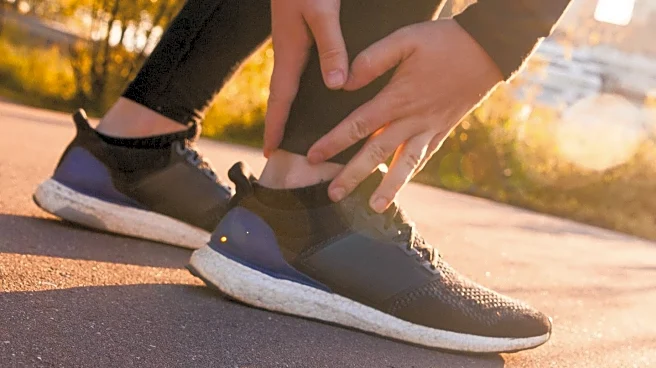What's Happening?
A recent study published in The BMJ highlights aerobic exercise as the most effective form of physical activity for alleviating pain and improving function in individuals with knee osteoarthritis. The research,
which analyzed 217 randomized clinical trials involving 15,684 participants, found that activities such as walking, cycling, and swimming significantly reduced pain and enhanced mobility and quality of life. The study emphasized that while other exercise types offer additional benefits, aerobic exercise should be the primary treatment approach. Osteoarthritis, a condition where cartilage wears down, affects about 30% of adults over 45, with the knees being the most commonly impacted joint.
Why It's Important?
The findings of this study are crucial for healthcare providers and patients managing knee osteoarthritis, a prevalent condition that significantly impacts quality of life. By identifying aerobic exercise as the most beneficial, the study provides clear guidance for treatment, potentially leading to better patient outcomes. This could influence public health recommendations and individual treatment plans, emphasizing the importance of regular aerobic activity. The study also reassures that these exercises are safe, with no increased risk of adverse events compared to control groups, making them a viable long-term management strategy.
What's Next?
The study's authors suggest that aerobic exercise should be recommended as a first-line intervention for knee osteoarthritis. For patients unable to engage in aerobic activities due to physical limitations, alternative structured physical activities may still offer benefits. Healthcare providers may need to tailor exercise recommendations based on individual capabilities and preferences, potentially incorporating flexibility, strengthening, or mind-body exercises as supplementary treatments. Further research could explore long-term outcomes and the effectiveness of combined exercise regimens.
Beyond the Headlines
This study fills a critical gap in exercise guidance for knee osteoarthritis, offering a comprehensive evaluation of various exercise types. It underscores the importance of personalized exercise plans and may prompt a shift in clinical practices towards more targeted exercise prescriptions. The findings also highlight the potential for exercise to serve as a non-pharmacological intervention, reducing reliance on medications and their associated side effects.











